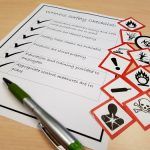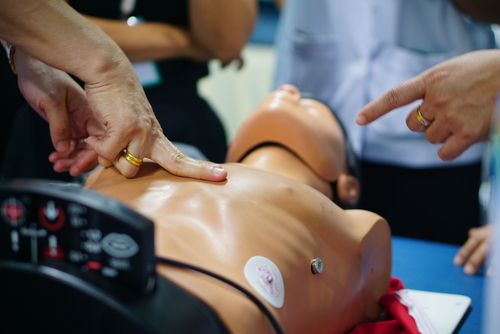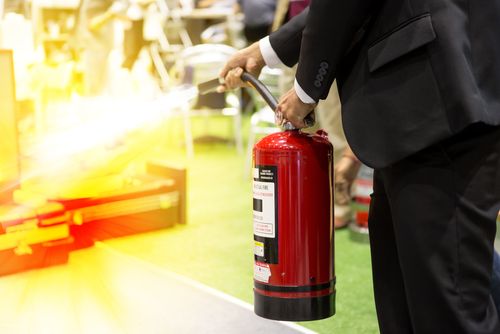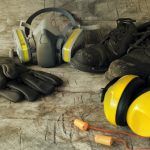
Health & Safety Abbreviations That You Need to Know
Health and safety abbreviations are a necessary part of communicating effectively in occupational health and safety situations. Knowing these abbreviations can improve workers’ ability to protect themselves and others, prevent workplace accidents and comply with safety regulations.
Hence, the team at Advanced CT would like you to know about these health & safety abbreviations.
What Are Health & Safety Abbreviations?
Health and safety abbreviations are terms or acronyms frequently used in the fields of workplace safety, emergency management, and environmental health. These acronyms are used in a variety of contexts, including businesses, governmental organisations, healthcare institutions, public health groups, etc.
Important Health & Safety Abbreviations To Know

- Personal protective equipment (PPE) is any gear or apparel intended to shield the wearer from physical injury or potentially dangerous substances.
- A Material Safety Data Sheet (MSDS) is a document that details dangerous compounds and safe handling procedures.
- Cardiopulmonary resuscitation (CPR) is a life-saving method to restart a person’s heart or breathing after it stops.
- An automated external defibrillator (AED) is a portable medical device used to shock the heart and reestablish a healthy heart rhythm in cardiac arrest victims.
- Emergency Medical Services (EMS) refers to the team of doctors, nurses, and other emergency personnel who offer immediate medical attention.
- Hazardous materials (HAZMAT) are chemicals, explosives, and radioactive materials are examples of substances that pose harm to human health or the environment.
- Respiratory Protection Equipment (RPE) is clothing or other objects that guard against inhaling dangerous substances or polluted air.
- Self-Contained Breathing Apparatus (SCBA) is a category of respiratory safety gear that gives the user access to breathable air in dangerous or oxygen-poor settings.
- Occupational Health and Safety Act (OHSA) is an Ontario law that establishes the duties and rights of both employees and employers in promoting workplace health and safety.
- Workplace Hazardous Materials Information System (WHMIS) is a system that provides details on hazardous substances used in the workplace. It covers worker education, safety data sheets, and labelling standards.
- Environmental Protection Agency (EPA) is a federal organization that controls pollution and upholds environmental regulations to safeguard public health and the environment.
- The Canadian Standards Association (CSA) is a nonprofit organization that creates and disseminates safety standards for various industries, including electrical safety, workplace safety, and personal protection equipment.
- Canadian Centre for Occupational Health and Safety (CCOHS) is a national organization that offers guidance, instruction, and support to advance workplace health and safety in Canada.
- The National Fire Protection Association (NFPA) is a global organization that creates and disseminates standards and guidelines for fire safety and prevention.
- The Certificate of Recognition (COR) program certifies employers who have put in place successful health and safety policies in the workplace.
- A Joint Health and Safety Committee (JHSC) is a body made up of both employee and management members that collaborate to recognize, evaluate, and get rid of workplace risks.

Why Is It Important to Know Health & Safety Abbreviations?
Knowing these safety acronyms and terms is crucial for a few reasons:
- In emergency response planning, workplace safety training, and regulatory compliance, health and safety abbreviations are frequently employed. People can communicate more successfully with their coworkers, superiors, and emergency personnel by understanding these abbreviations.
- Abbreviations for health and safety frequently relate to crucial safety tools, processes, and laws. Understanding these acronyms can help workers realize how crucial it is to use the right tools, adhere to the right procedures, and follow the rules to maintain a safe and healthy working environment.
- During an emergency, every second matters. Having a working knowledge of health and safety acronyms can make it easier for people to respond to situations and rapidly identify and locate emergency equipment like AEDs or fire extinguishers.
- Many health and safety acronyms refer to governing bodies like CCOHS, CSA or EPA. Employers can comply with regulations set by these organisations and avoid exorbitant fines or penalties by understanding these acronyms.
Advanced CT – Leaders In Occupational Health & Safety
Understanding health and safety abbreviations is essential for keeping a secure and healthy work environment, communicating clearly with coworkers and emergency personnel, acting correctly in emergencies, and adhering to legal requirements. Workers can better safeguard themselves and their coworkers, avoid accidents and injuries and guarantee regulatory compliance by becoming familiar with these abbreviations. In order to ensure a safer and healthier workplace, it is highly advised that people working in any business or profession become familiar with common health and safety abbreviations.
Please contact us if you still have questions about health & safety acronyms. Advanced CT provides prompt, cost-effective and relevant workplace health and safety solutions. Since our founding in 1998, we have offered clients reputable services backed by professional credentials. With our help, your workplace can become safer and more secure for all interested parties.



